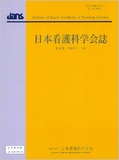Japanese
English
- 販売していません
- Abstract 文献概要
- 参考文献 Reference
要旨
目的:子育て期にある女性看護師(以下,子育て期看護師)におけるワーク・ファミリー・エンリッチメントの資源を明らかにする.
方法:日本病院機能評価機構の認定病院に勤める未就学児を養育する女性看護師16名に半構成インタビューを実施し,質的記述的に分析をした.
結果:子育て期看護師の仕事役割から得られる資源は,【ケア能力】【指導力】【効率性】【充実した感情】【社会性育成の環境】【経済的な安定】であり,家族役割から得られる資源は,【共感力】【受容力】【視野の広がり】【調整力】【ヘルプシーキング行動】【充実した感情】であった.
結論:すべての子育て期看護師は,実感の差はあるものの,仕事の経験が家族役割に,母親等家族役割の経験が仕事役割の質を向上させる資源を獲得していた.それぞれの役割で得られる資源は,相互に影響し合っており,一つの資源を得ることが他の資源獲得のトリガーになることが示唆された.
Purpose: This study aims to qualitatively examine work-family enrichment resources for female nurses raising preschool children (hereafter, parent nurses). Work-family enrichment is the extent to which an individual's experiences in one role improve quality of life in another. This relationship can be bidirectional; work-to-family enrichment occurs when work experiences improve the quality of familial roles, and family-to-work enrichment occurs when family experiences improve the quality of work.
Method: Participants were 16 parent nurses working in hospitals accredited by Japan Council for Quality Health Care. Semi-structured interviews were used to collect data on participants' work-family enrichment resources. Data were analyzed qualitatively and inductively.
Results: The work-to-family enrichment resources were classified into six categories: “care capability,” “ability to lead,” “efficiency,” “emotional fulfillment,” “cultivation of sociality,” and “economic stability.” The family-to-work resources were classified into another six categories: “empathy,” “receptiveness,” “expansion of one's horizon,” “coordination ability,” “help-seeking behavior,” and “emotional fulfillment.”
Conclusion: All participants had gained resources from their work experiences that improved their family roles, as well as resources gained through experiences in their familial roles that improved their work quality. The findings suggest that the resources obtained from each role interacted with each other, and that the acquisition of one resource triggered the acquisition of others.
Copyright © 2022, Japan Academy of Nursing Science. All rights reserved.


